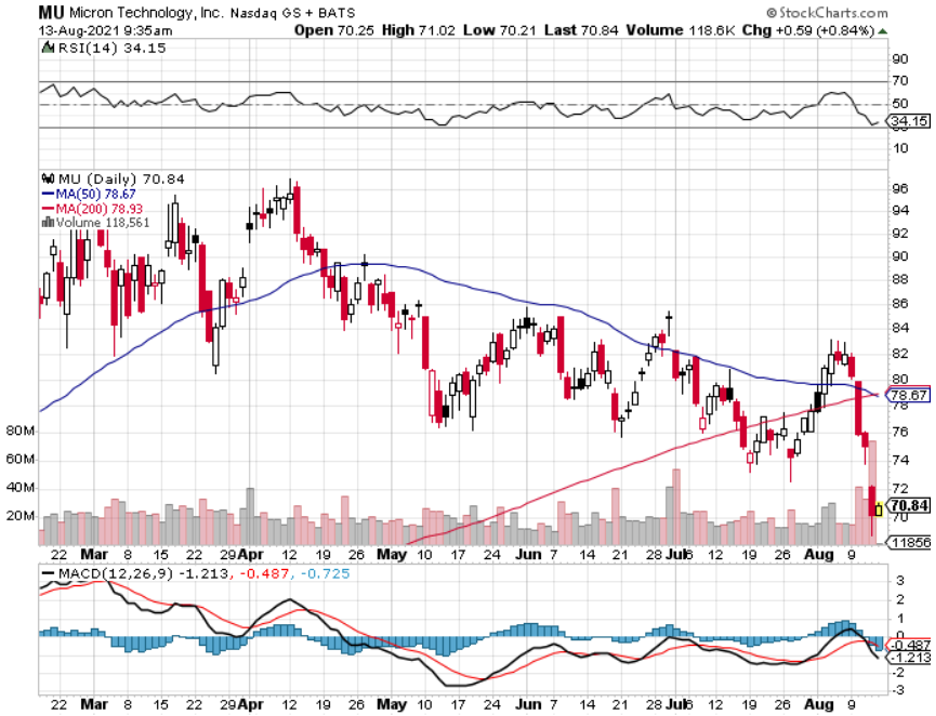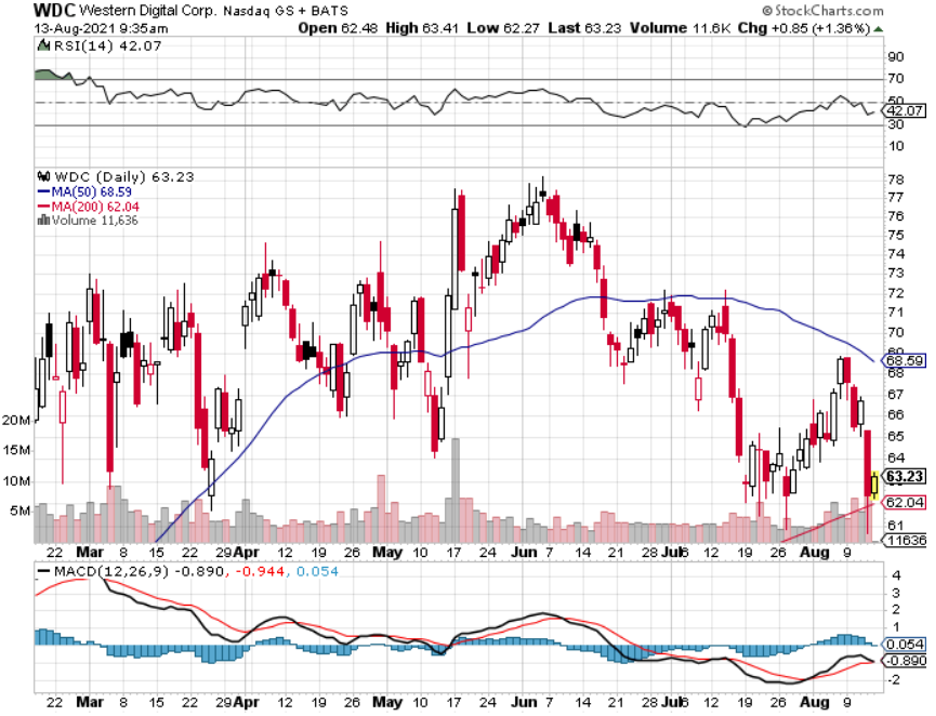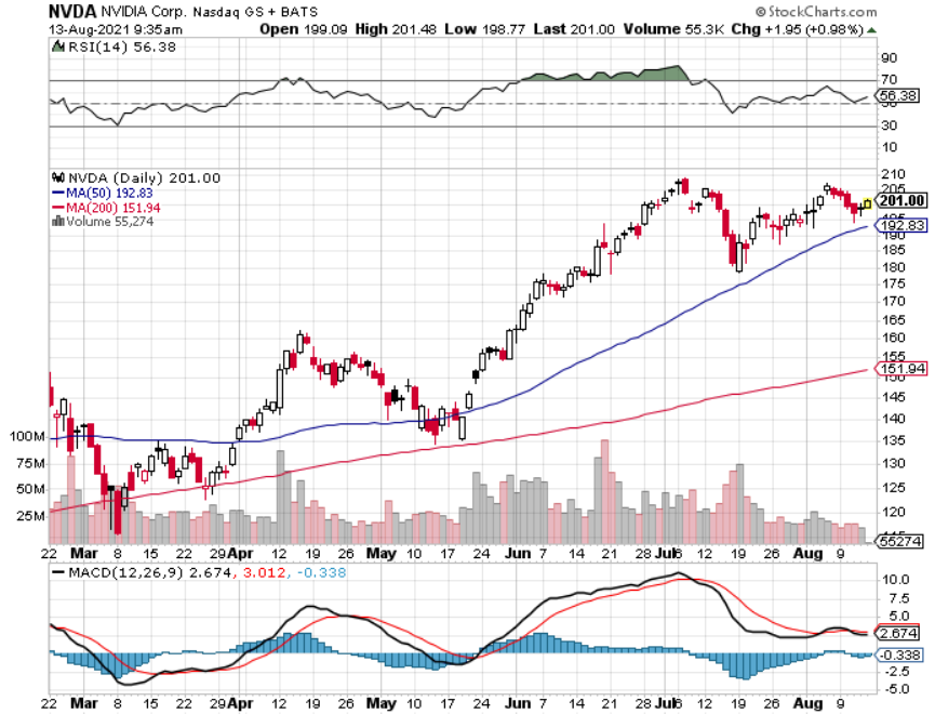Is the chip industry about to freeze over?
Signs are creeping in of a cyclical downturn in memory chips starting in the first quarter of 2022.
This is all brought about by cycle indicators signaling that we are shifting out of 'midcycle' to 'late-cycle' for the first time since 2019 and this phase change has historically meant a challenging backdrop for forward returns.
The investments have been pouring in from chip companies to build more foundries and to improve chip performance.
Incrementally, new supply will eventually come online to address the giant chip shortage that many industries are grappling with.
However, I will say that whispers of an imminent collapse in the chip dynamics are exaggerated at best.
I don’t believe that the next cyclical downturn begins from Q1 2022 exacerbated by inventory builds.
We are still far from that happening even if the chip environment has tensed up more so now.
Micron (MU) has said that the order-filling time for chipmakers now exceeds 20 weeks.
The order-filling time represents the period from ordering a semiconductor to receiving it. That metric added on more than eight days in July, putting the total at 20.2 weeks.
Businesses from automakers to consumer-electronics companies are suffering from the chip shortage. Carmakers are expected to miss out on $100 billion in sales due to the lack of critical components.
Another industry-wide headwind is the UK's possible blocking of Nvidia’s (NVDA) planned $40 billion acquisition of Arm Holdings over national security issues.
A possible downturn in the chip cycle would also mean heavyweight South Korean memory-chip maker SK Hynix will severely underperform as well.
There are forecasts of contract prices for memory chips used in personal computers that decline by as much as 5% in the December quarter from the September quarter.
The PC market is only 20% of the DRAM market. Smartphone DRAM accounts for 40% of the market and server DRAM is 30% of the market. Miscellaneous device markets make up the remaining 10%.
Therefore, it is safe to say that not all the eggs are in one basket.
However, an analyst downgrade has set the tone for all makers of dynamic random access memory chips and puts the onus on the entrenched to prove the supposed downturn is not the case.
A world in which all relevant companies have hoarded chips because of the fear of not be able to source the right chips would be a transitory issue.
I don’t see demand falling off a cliff.
Many of these DRAM companies have moats around their business models and the case of businesses snapping up a high volume of chips and their inventories peaking out is a problem many companies would love to have.
As we progress into 2022, companies will start to plan their next iterations of devices and gadgets, and no doubt the next generation will need at least 50% more high-performing chips compared to the last version.
The pricing pressure is almost analogous to what happened with lumber prices and builders started buying at whatever prices during the short squeeze earlier this year.
This doesn’t mean the housing industry is doomed, but I understand it more as moderating prices will be a tailwind for the overall health of the industry.
Chips are famous for that boom and bust dynamic.
The price gains in chips cannot be absorbed in the same rate and as prices moderate, companies will start to look at acquiring the next batch of chips even if inventory is high.
In the short term, chip stocks are on course for a short correction that could take around a quarter to digest, but I highly doubt this will last into next year.
The 30,000-foot view shows us that many chip firms are enjoying record demand for their best chips driven by cloud customers’ capital expenditures, and even upside from the popularity of cryptocurrency-related chip products.
Demand is everywhere to be found.
The leading-edge manufacturers will take this dip in stride and adjust for the new environment in 2022.
Lower pricing expectations is something that nobody wants to hear as a chip CEO and absorbing a more challenging pricing environment into 4Q does not beat price spikes.
It gets lost that DRAM prices increased 35% over the past two quarters, with expectations for a “further modest increase” through the end of this year.
The industry can afford a little reversion to the mean pricing and shareholders will mostly stay in these stocks long term.
I understand that this dip in chip shares like Micron caused by moderation of pricing power translates into a great entry point into the stock for new buyers.
Quite quickly will investors start to shrug off this negative element to the industry and pile back into premium names or just stick with Nvidia who doesn’t sell DRAM chips.





